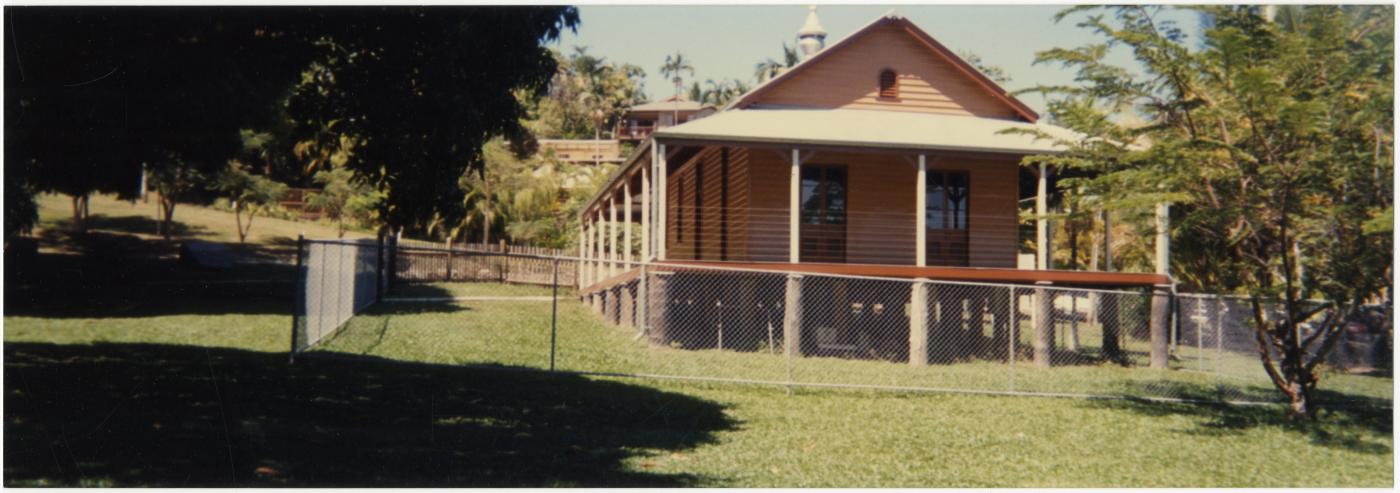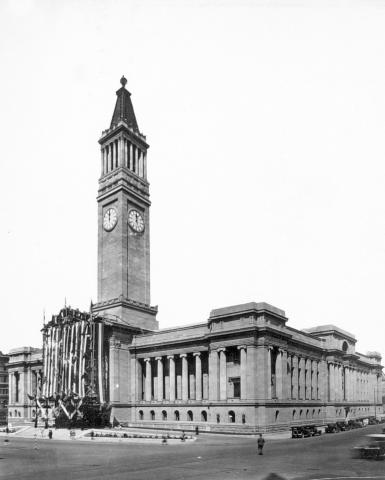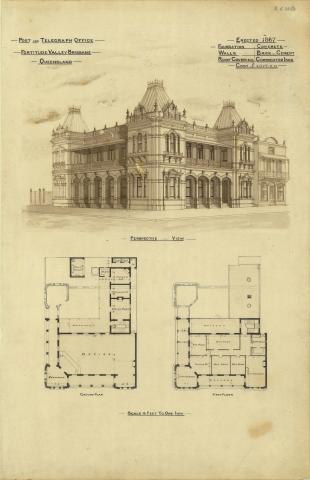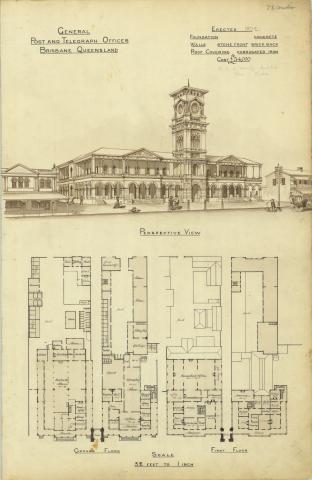
- News of the day
-
Brisbane Courier, Wednesday 22 March 1911, page 5
A DEVASTATING CALAMITY.
THE NORTHERN CYCLONE.
PORT DOUGLAS PRACTICALLY DESTROYED.
TWO FATAL ACCIDENTS ; PERSONS SERIOUSLY INJURED.
BUILDINGS AND LIGHTHOUSE BLOWN DOWN; KETCH WRECKED.
CAIRNS, March 21. - The steamer Palmer arrived last night from Port Douglas, bringing news of absolutely the most devastating calamity that could possible overtake an already unfortunate township. The cyclone, which was of extraordinary intensity, struck the scattered buildings which constituted the town of Port Douglas on Thursday evening last, and now but few buildings remain. Practically none escaped damage. Throughout Thursday afternoon rainy gusts swept over the town, and towards 6 o’clock sheets of iron began to fly about. The verandah in front of Callaghan Walsh’s store loosened and it seemed as if the top portion of Sampson’s Exchange Hotel was in immediate danger. It as hard indeed for a pedestrian to make any progress against the tempestuous force of the wind while the rain surged down heavily, and sheets of iron were blown from J.D. Crosbie’s Court House Hotel. The Anglican Presbytery, which had been unroofed by a previous blow of a much milder nature, was now completely demolished. Water was dripping from the top story of McLean’s Caledonian Hotel onto the bread etc on the dining-room tables, and it was hard to find any place where the water did not come from the ceiling with most unpleasant persistency. People soon began to seek refuge, the Government Bond being much sought after, on account of the apparent strength of this structure. The faith placed in the stability of the building, however, was not justified for the occupants (numbering 40) had just taken timely warning from its nerve-shaking tremors and emerged from the doorway to reach the fence round the Customs building, when the bond store collapsed. Fortunately, no-one was injured. Two sample rooms opposite McLean’s Hotel collapsed, also the Shire Hall, St Mary’s Roman Catholic Church, the Oddfellows’ Hall, and the Joss House.
The fine ketch Iolanthe, belonging to Jerry Doyle, broke from strong moorings up the inlet, and was smashed in the harbour. The pilot cutter used for conveying rations to Low Island Lighthouse turned turtle but S.B. Andreasson’s oil launch sustained no damage. Walsh’s steamer Dove did not fare too well. The light-house on the hill toppled over soon after the pilot had made his escape.
One of the saddest incidents of the cyclone was the deaths of Messrs. Andrew Jack and Timothy Joseph O’Brien. Mr Andrew Jack, who was a member of the Douglas Shire Council, was killed by some timber falling upon him at his resident at Killaloe, about four miles from Port Douglas, where for a number of years he had been engaged in cane growing. Mr Timothy Joseph O’Brien was escorting his mother and sister from their falling residence, when he was struck on the back of the neck by a piece of wood attached to some galvanised iron. His neck was dislocated, and the base of the skull fractured. A little girl, the daughter of Mr William May, butcher, had her forehead severely cut, and Dr Clarke had to put a number of stitches into the wound; in fact her life was for some time considered to be in danger. An Italian named Yaranotti was severely injured by a portion of his home falling upon him at the Mossman. He was brought into the hospital at Port Douglas in a most critical state. - Background
-
The Port Douglas Court House was constructed in 1879 as the first court house in the town. It is a simple timber structure with verandahs to all four elevations.
The Port Douglas Court House is one of the earliest surviving timber constructed court houses in Queensland. When Queensland separated from New South Wales in 1859, there were only six court houses in the new colony. During the next forty years, over 145 court houses were erected in Queensland, ranging from slab structures to the substantial Supreme Court building in Brisbane.
Although the Port Douglas Court House was primarily used as a place to conduct court sessions, it was also used for other purposes including police offices and briefly, as a residence for the town's only police officer. It was also considered as a site for the local school. Most of the cases heard were of a modest nature, the exception being one of the most notable court cases in Queensland history when in 1886 Ellen Thompson was found guilty of murder and sentenced to death. In June 1887 she became the only woman to be hanged in Queensland. - Courtesy of the Queensland Heritage Register
/145.4630959,-16.4795538,7/450x450@2x.png?access_token=pk.eyJ1IjoicXNhLWRpc2NvLXFsZCIsImEiOiJjamJmdTgyZXEyeWNjMnlxZm8xcmtieHgxIn0.lmT9J5tTPKGuuccQgCVSAg)



